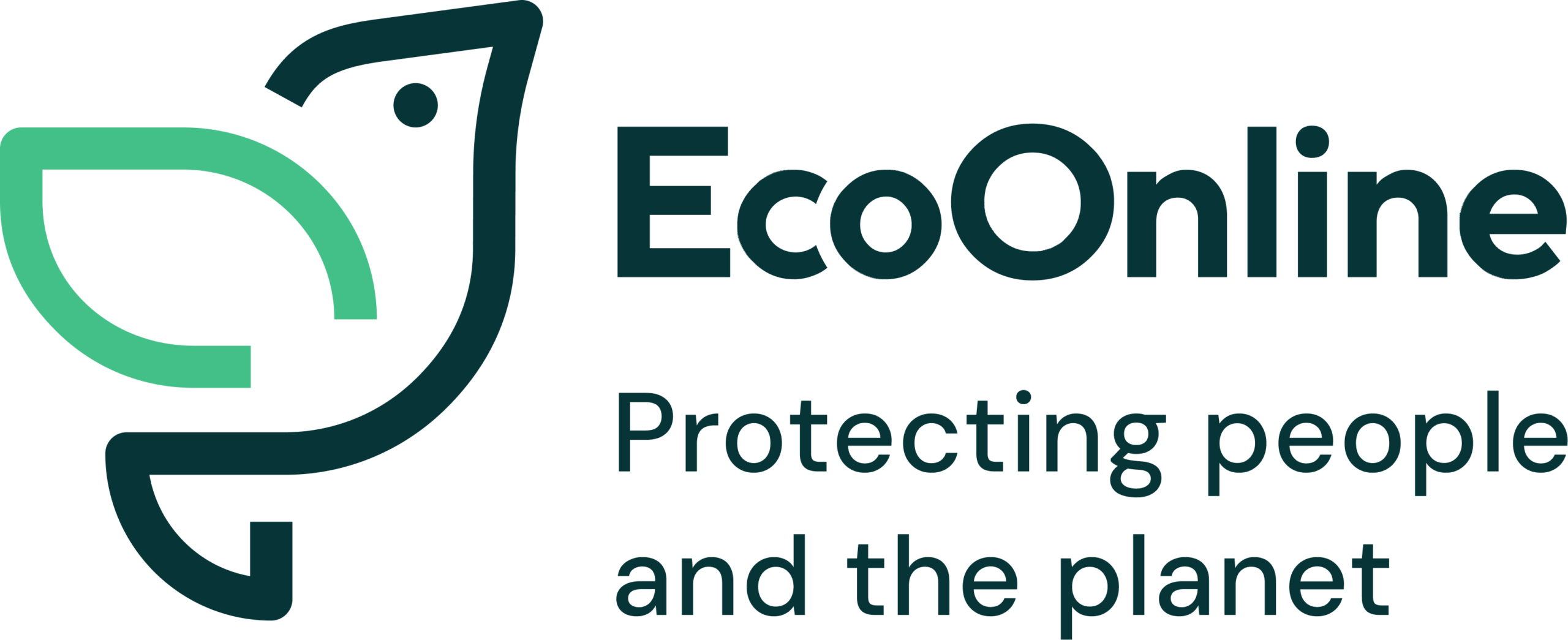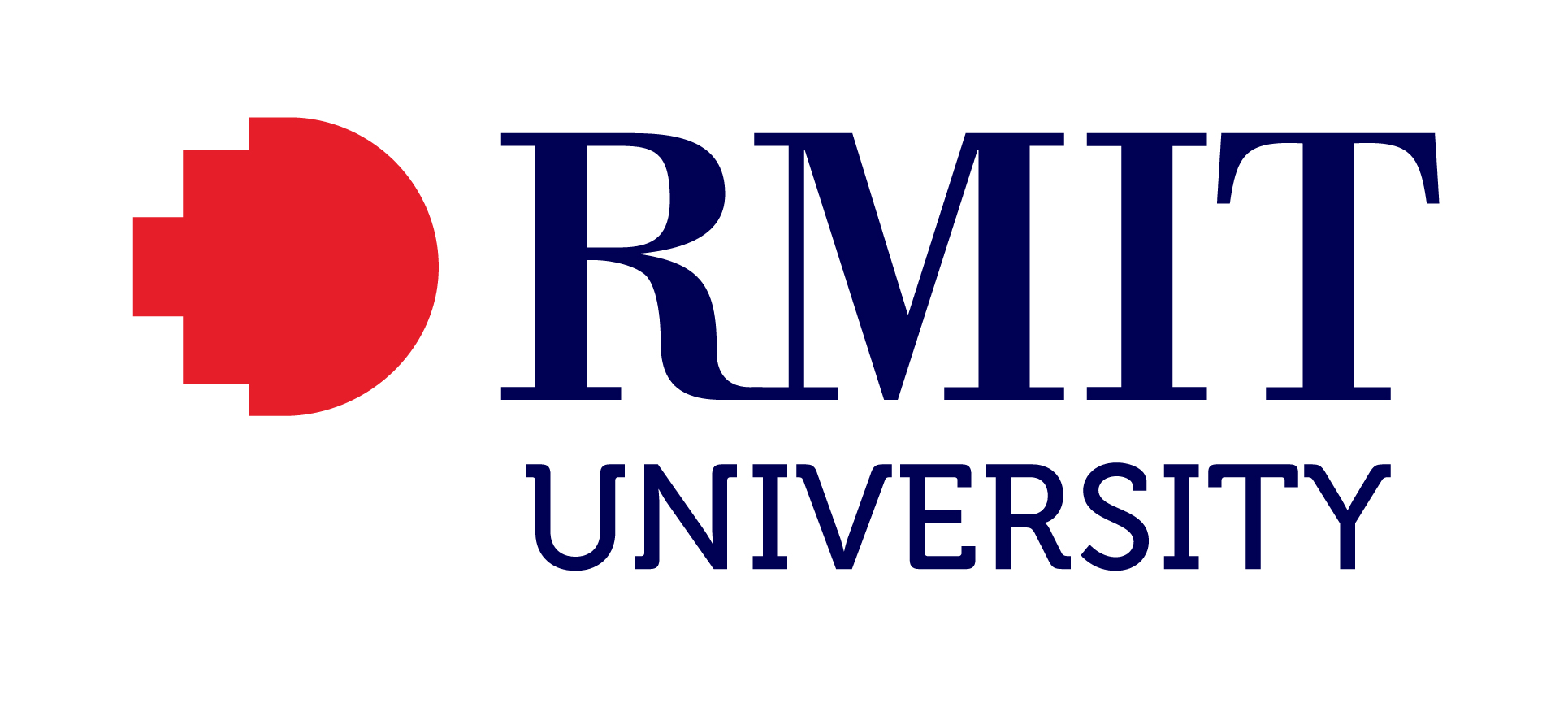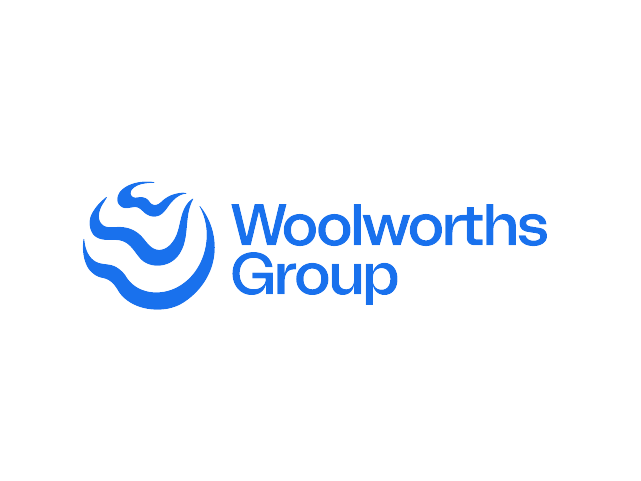AWHSA 2025 Awards Categories
Organisational / Team Awards
- AWARD 4: WHS Team of the Year Award
- AWARD 5: Best Health & Wellbeing Strategy Award
- AWARD 6: Best WHS Training & Development Award
- AWARD 7:: Best WHS Technology Innovation
- Less than 1,000 employees
- Greater than or equal to 1,000 employees
- AWARD 8:: Best WHS Technology Deployment and Adoption
- Less than 1,000 employees
- Greater than or equal to 1,000 employees
Meet the Outstanding Finalists of AWHSA 2025
Secure your seats for the Gala Dinner Event
Award 1: WHS Leader of the Year Award Finalists
Less than 1,000 Employees

Stephen Allen, OneFortyOne Wood Products Australia
Steve Allen’s WHS career spans more than 40 years in the timber industry, beginning as a Saw Doctor apprentice and progressing through roles from the shop floor to senior leadership. His safety journey was shaped by two early workplace fatalities that reinforced his belief that every statistic represents a person.
Steve has held key roles with CSR Timber Products, Weyerhaeuser, Carter Holt Harvey and Alcoa, where he developed expertise in compliance and auditing. At Jubilee Sawmill he led one of the industry’s most significant safety transformations. As a founding member of the AFPA Safety Subcommittee, he helped develop critical risk guidance now used across the sector, influencing safety practice nationally while mentoring teams and shaping culture.
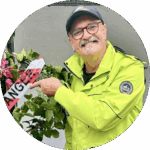
Neil Fanning, Fanning Enterprises Pty Ltd
Neil Fanning is a nationally respected WHS leader with more than 35 years of experience shaping safety culture across film, television, live performance and events. He currently leads safety for productions with Netflix, Stan, Fremantle and BBC Studios Australia, embedding WHS practices from pre-production to wrap.
Starting as an actor, stunt performer and voice artist, Neil’s firsthand knowledge of on-set risk informed his transition into WHS leadership, supported by formal qualifications. His safety credentials span over 50 productions, while his engaging Safety Briefings are considered an industry benchmark. Neil has also delivered WHS leadership for major events including the Commonwealth Games Festival and Safer Schoolies and was appointed WHS Safety Specialist Advisor to AFTRS in 2024.

Kurt Warren, Hansen Yuncken
Kurt has over 25 years of safety leadership across high-risk industries including engineering, nuclear, aviation, defence, utilities and construction, with senior roles at ANSTO, Defence, Qantas, Ausgrid, Veolia, Laing O’Rourke and Hansen Yuncken (HY). A Fellow of the AIHS, he serves on HY’s Executive Leadership Team and WHS Board Sub-Committee and is Advisory Board Chair for the University of Newcastle’s Centre for Construction Safety and Wellbeing.
Kurt is recognised for translating research into practice and pioneering cultural transformation through worker engagement initiatives now widely adopted across projects. He has advanced open-access safety tools including Next Gear SMS and HY’s Workzone platform, creating practical resources that strengthen worker engagement and deliver meaningful improvements in safety performance.

Ren Watts, Y Careers
Ren Watts has more than 15 years of frontline, operational and strategic experience across mining, training, youth employment and community services. Her WHS career began in FIFO mining, where she managed safety audits, inductions and inspections at Cape Crushing and BHP’s Mt Keith operations. Firsthand experience as a process technician shaped her practical, grounded approach to safety in high-risk environments.
Ren later moved into the Group Training Organisation sector, supporting vulnerable cohorts in training and employment. At BGT Jobs + Training Ballarat she led WHS compliance across apprenticeships, return-to-work processes and emergency planning. Now at Y Careers, she has built a national WHS framework, embedding practical, person-centred systems for young people in the care sector.

Ben Kirkbride, Gamuda
Ben Kirkbride’s 22-year WHS career is grounded in lived experience, beginning as a boilermaker in heavy steel fabrication where he saw firsthand the gap between systems and the realities of high-risk work. That perspective shaped his leadership approach, built on relationships, ownership and shared responsibility.
He has held senior WHS roles across tunnelling, civil infrastructure, energy, rail, logistics and telecommunications with John Holland, Laing O’Rourke, Roberts Co and DownerMouchel JV, driving major systems overhauls, ISO certifications and culture change. At Gamuda Australia he established the WHS framework for Sydney Metro’s $2.1 billion Western Tunnelling Package and co-created the award-winning Tunnelling and Infrastructure Academy. A Fellow of the AIHS, he also chairs the National Mentoring Committee, supporting emerging WHS leaders.

Yvonne Paye, Gold Coast Hospital And Health Service
Yvonne Paye has built a distinguished WHS career across health and community services, with leadership roles in one of Australia’s largest not-for-profit disability providers before joining Gold Coast Hospital and Health Service (GCHHS). She became Director WHS in 2022 after leading injury prevention, quickly establishing herself as a trusted advisor to the Board, Executive and senior leaders.
Her leadership has transformed the WHS team into a cohesive, high-performing unit delivering safety improvements across the organisation. Yvonne has been recognised with three Return to Work Awards and has contributed to industry initiatives including WCQ’s Recovery Blueprint and the Health and Community Care Employer Network. A sought-after keynote and panel speaker, she is known for consultative leadership, practical solutions and raising the profile of WHS at a strategic level.

Ankita Raju, Ventia
Ankita Raju’s WHS career began while studying Health Science and working at Bunnings, where she saw the importance of safety systems in protecting people and enabling business continuity. After postgraduate study in Occupational Health Management, she gained experience supporting major public precincts and high-profile events before joining Ventia in 2020 as a Junior SHEQ Advisor.
She has since progressed to SHEQ Manager for Ventia’s $109 million NSW Social Housing Contract, overseeing a workforce of 1,900. Ankita is recognised for bridging policy and practice through strong operational relationships, system knowledge and practical leadership. She also contributes as an Elevate Champion, facilitates leadership workshops and mentors emerging WHS professionals, strengthening safety capability across the business.
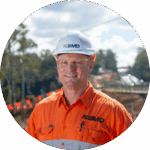
Ben Weston, BMD Group
Ben Weston’s WHS career is shaped by lived experience and technical expertise. Starting as a bricklayer, he gained firsthand insight into the demands of high-risk work before returning to study as a mature-age student. He went on to complete a Bachelor of Occupational Health and Safety, Diploma in Environmental Management and multiple certifications in investigation, training, rehabilitation and emergency response.
With more than 13 years’ experience in safety and civil construction, Ben is skilled in building safe working environments and aligning safety standards with project and regulatory requirements. Since joining BMD in 2020, he has supported major projects including RAAF Base Tindal and the Centenary Bridge Upgrade. Known for innovation and clear communication, he fosters safety as a shared value owned across all levels.

Kristine Gray: Leading with Care, Delivering with Courage, Downer Energy & Utilities
Kristine Gray’s safety career is built on real-world experience and a commitment to making a difference. Beginning as a Care and Communications Officer during major shutdowns, she became a trusted conduit between workers, supervisors and site management, gaining firsthand insight into psychosocial challenges such as fatigue and family pressures.
Her background in the health sector and subsequent Cert IV in WHS enabled her to progress from Drug and Alcohol Tester to advisory roles. Known for her practical, people-first approach, Kristine views safety as everyday actions that prevent harm rather than just systems or procedures. Her progression from the frontline to a lead safety role reflects her belief that trust, integrity and care drive effective safety culture.

Kate Hudson, Coca-Cola Europacific Partners
Kate has worked at Coca-Cola Europacific Partners (CCEP) for 19 years, moving into the Safety Team in 2023 after a long career in sales. Her interest in safety grew through active involvement in the Sales Safety Committee and was further shaped by her own experience with serious illness, which gave her a renewed purpose to make work safer and more meaningful for others.
Through a secondment as a safety partner, Kate exceeded expectations despite working part-time while recovering, leading to a permanent appointment. In just 2.5 years she has become highly respected for applying her strong relationship and problem-solving skills to safety. Kate is committed to continuous improvement and to creating safer, better workplaces for everyone.

Avneet Singh, Downer Group
Avneet Singh transitioned from data and actuarial analysis into WHS in 2021, applying analytics and systems design to achieve measurable safety improvements. He holds a Master of Information Technology and a Cert IV in WHS. Early consultancy work included mapping injury trends, advising on compliance, risk assessments and co-authoring updated hazard identification protocols.
Since joining Downer as Zero Harm Business Analyst, Avneet has replaced legacy reporting with a unified digital platform, introduced a mobile app that increased lead interactions by 40% and integrated risk frameworks with emerging technologies such as Business Intelligence, Machine Learning and AI. He has delivered initiatives including the Safe Over Summer & BodySafe roadshow, critical control audits, resilience workshops and wellbeing campaigns, fostering innovation and continuous improvement.

Kelly Sibbes, WSP Services Pty Ltd
Kelly entered the WHS profession after a decade in operational and administrative roles across engineering, petrochemical, defence and Aboriginal investment sectors. Exposure to high-risk environments shaped her appreciation of safety leadership, and since joining WSP Services in 2021 she has progressed from administration to People and HSEQ Manager with national oversight.
Motivated to bridge the gap between system design and operational usability, Kelly emphasises that safety is about empowering decision making, not just compliance. She has led the integration of Human and Organisational Performance principles into incident reviews, audit tools and leadership training, strengthening consultation and psychological safety. Known for her collaborative and empathetic leadership, Kelly builds capability, simplifies complexity and ensures frontline voices are central to safety outcomes.

Jonko Florido, Clublinks
Jonko is Compliance and Customer Experience Manager at Moore Park Golf and Precinct, a complex facility covering golf, sport, recreation and public event spaces. As a Health and Safety Representative (HSR), he plays a central role in embedding proactive WHS practices across both operational and front-of-house environments.
He leads the site’s WHS Committee and Emergency Management Meetings, driving consultation and follow-through on hazard identification, risk control and incident prevention. Jonko has refined safe systems of work in high-risk areas including confined spaces and plant operations, while also overseeing staff training, inductions and competency checks. His collaborative, customer-focused approach ensures safety is both compliant and aligned with operational excellence, strengthening culture and outcomes across the precinct.

Don Jundam, Gold Coast Hospital And Health Service
Mashur Bin Mashur Jr Jundam, known as Don, is a Clinical Nurse and Health and Safety Representative (HSR) in the Cardiac Catheter Suite at Gold Coast Hospital and Health Service. In his clinical role, he leads implementation of NSQHS Standard 6: Communication for Safety, conducts audits, and regularly acts as Team Leader coordinating patient flow and multidisciplinary teams.
As an HSR, Don has fostered a proactive safety culture through monthly inspections, risk identification and staff education. He has led improvements in ergonomics, injury prevention and infrastructure upgrades such as lab remodelling. Respected for his approachable style and strong communication, Don is a trusted advocate between staff and management, contributing to safer and more collaborative workplace practices.

Alistair Kerrison, Swickers Kingaroy Bacon Factory Pty Ltd
Alistair Kerrison has been a valued member of Swickers, part of the SunPork Group, since 2016 and was elected Health and Safety Representative by his peers for his integrity, leadership and commitment to safety. Working in a high-risk processing environment, he plays an active role in safety meetings, risk assessments and investigations, consistently identifying hazards and driving corrective actions in partnership with the WHS team.
As a neurodivergent employee on the autism spectrum, Alistair brings exceptional attention to detail and unique insight, enabling him to identify risks early and contribute to effective prevention strategies. A strong communicator and advocate for inclusion, he fosters a culture where colleagues feel responsible for safety and empowered to speak up.

Scott Miller, Eastern Health
Working in the high-risk Community and Care at Home sector, Scott has established himself as an outstanding Health and Safety Representative (HSR) with immediate and lasting impact. He is a strong advocate for Designated Work Group staff, proactively identifying risks, implementing practical solutions and championing safer workplaces.
Scott acts as a vital link between frontline staff and senior management, ensuring worker concerns translate into meaningful improvements. His ability to bridge policy and practice has strengthened safety outcomes in complex environments. Through his collaborative leadership he has fostered a culture where safety is viewed as a shared responsibility, leading to smarter systems, safer practices and more empowered teams.

ermha365 OVA Taskforce, ermha365
This cross-functional team combines expertise from WHS, Quality, Safeguarding and Risk, Training, Operations and Clinical services to deliver significant improvements in safety outcomes, with a strong focus on reducing Occupational Violence and Aggression (OVA) and increasing awareness across the organisation.
Led by the WHS Manager with executive oversight from the General Manager, Clinical Governance, the team integrates clinical and operational perspectives to identify risks, review incidents and implement effective improvements. Their work includes embedding practice risk frameworks, strengthening compliance and ensuring staff engagement through clear communication. With specialists spanning governance, clinical, training and operations, the team delivers practical, evidence-based solutions that enhance safety, drive cultural change and achieve measurable outcomes for staff and clients.

Norco WHS Team, Norco Co-operative
The Norco WHS Team supports 800 people across 30 sites in NSW and QLD, with members based in Lismore, Coffs Harbour and the Gold Coast to provide accessible, site-focused support. The team includes a WHS Manager, two WHS Advisors and a Health and Wellbeing Advisor, enabling risk-specific guidance while maintaining consistency across the business.
Working closely with site teams, the WHS Team enhances safety culture, builds confidence in risk management and promotes wellbeing. They develop fit-for-purpose systems, embed continuous improvement strategies and provide education tailored to Norco’s operations. By mentoring teams through risk assessments, incident investigations and corrective actions, the team fosters safer workplaces and stronger engagement across all business streams.
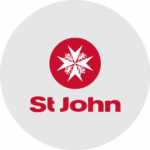
St John WA WSIM Team, St John WA
The Wellbeing Safety and Injury Management (WSIM) Team at St John WA supports more than 7,000 employees and volunteers across one of the most geographically dispersed networks in the world. Working across high-risk environments including emergency ambulance services, patient transport, health services, communications and logistics, the team ensures every member can perform their role safely and sustainably.
Comprised of specialists in WHS, workers’ compensation, clinical psychology and wellbeing, alongside embedded business partners and advisors, the team delivers localised support with enterprise-wide influence. Their work spans proactive risk management, injury prevention, compliance, incident investigation, return-to-work coordination and psychological safety. Through evidence-based practice, engagement and governance, WSIM has lifted safety performance and embedded a mature, inclusive safety culture across St John WA.
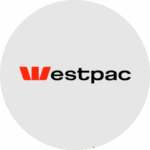
Westpac's Employee Care Team: Leading the Way in Psychosocial Safety and Providing Care in the Moments That Matter
Westpac Banking Corporation
Westpac’s Employee Care team plays a central role in embedding the organisation’s Health, Safety and Wellbeing Plan and Mental Health Strategy, focused on eliminating risks, minimising harm and providing care in the moments that matter. Guided by the Group Head of Employee Care, the 50-member team brings expertise from psychology, safety, allied health, HR and legal, with all members trained in trauma-informed care and psychological first aid.
Key roles include Australia’s first Chief Mental Health Officer, HSW leads, governance specialists, allied health consultants, workplace resolution and claims consultants, data and performance leads and employment lawyers. Working across both strategy and operations, the team partners with leaders and employees to create a safe, supportive workplace where wellbeing is integral to performance.
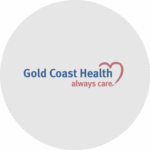
Work Health and Safety, Gold Coast Hospital and Health Service
The WHS team at Gold Coast Hospital and Health Service (GCHHS) is a 31-member unit led by Director Yvonne Paye, comprising Injury Prevention, Injury Management, Governance and Projects and Education teams. Together they collaborate to tackle safety challenges and drive initiatives with the shared goal of keeping workers safe.
The Injury Prevention team partners with leaders and staff to identify and manage risks through inspections, assessments and trend reporting. Injury Management supports staff recovery and return to work, working closely with insurers and managers. Governance maintains the WHS management system, policies and reporting, while Projects and Education delivers WHS training, leads occupational violence and fatigue prevention programs, and drives initiatives from development through to implementation.
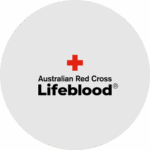
Support the Pause - Menopause at Work, Australian Red Cross Lifeblood
Lifeblood embeds health, safety and wellbeing into its culture and strategy, recognising that a thriving workforce is essential to delivering its purpose for the community. Guided by the Health, Safety and Wellbeing Workplan, aligned with Lifeblood Unlocked, the organisation takes a proactive, inclusive and evidence-based approach built around three drivers: Promote Thrive, Prevent Harm and Proactive Care.
A key initiative is Support the Pause, a three-year roadmap addressing menopause at work and supporting the 76% of employees who are women. By enhancing gender equity, strengthening the employee value proposition and raising community awareness, the initiative positions Lifeblood as a leader in inclusive wellbeing. Through these commitments, Lifeblood is creating a workplace where all employees feel seen, supported and empowered.

Brisbane Catholic Education - Employee Wellbeing Strategy, Brisbane Catholic Education
In 2023 Brisbane Catholic Education (BCE) launched its first comprehensive Employee Wellbeing Strategy, marking a significant step in embedding wellbeing across the organisation. Designed to foster a thriving workforce, strengthen relationships and improve educational outcomes, the strategy reflects leadership commitment, broad consultation and alignment with BCE’s vision and mission.
The initiative was informed by data analysis, benchmarking, focus groups and survey feedback to identify priorities and shape a holistic, evidence-based approach. It places employee wellbeing and psychosocial risk management at the centre of organisational practice, ensuring consistency across the system. By putting people first, BCE has created a practical and meaningful strategy that strengthens psychological safety, supports staff and sets a new benchmark in the education sector.
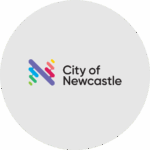
City of Newcastle Health & Wellbeing Strategy, City of Newcastle (CN)
City of Newcastle (CN) recognises that supporting the health, safety and wellbeing of employees creates safer, more productive workplaces and positive outcomes for the wider community. CN shares responsibility with its workforce to foster a culture where healthy choices are valued and wellbeing initiatives are accessible.
Adopting a holistic approach, CN addresses not only physical safety but also mental, emotional and social wellbeing, acknowledging the connection between personal circumstances, work experiences and performance. Initiatives are designed to reduce risks, ease stress and strengthen relationships, helping employees feel supported and empowered. By prioritising wellbeing, CN is building a workplace where people thrive and extending those benefits to families, communities and the services it delivers.

The Eureka Group, The Eureka Group
Eureka Group’s mission is to enrich Australia’s green infrastructure while protecting the health and wellbeing of its workforce. Operating in high-risk outdoor environments where manual handling, fatigue and heat exposure are daily challenges, the organisation treats wellbeing as a core business function, not an add-on.
In 2024 Eureka launched Green & Lean, a strategy combining strength training, evidence-based nutrition, hydration education and resilience practices to reduce preventable injuries and build workforce capability. Developed with employee input and guided by trainers, dietitians and wellness champions, the program is both inclusive and practical. By embedding wellbeing into its mission, Eureka is strengthening workforce resilience, supporting safer worksites and creating more sustainable communities.
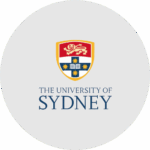
University of Sydney- Health and Wellbeing Program (2023-2026), University of Sydney
The University’s Health and Wellbeing Program (2023–2026) is a four-year initiative designed to support health, prevent harm and promote thriving through an integrated model. Aligned with the University’s 2032 Strategy, the program reflects the aspiration to be a better place to work while enhancing the student experience.
Developed in response to both strategic priorities and updated WHS legislation on psychosocial hazards, the program establishes robust governance, systems and processes to ensure a healthy workplace. It also addresses sector-specific challenges including a casualised workforce, competitive grant cycles, rising student mental health needs, international student support and financial pressures. Through a phased and inclusive approach, the program provides tailored support across portfolios, schools and faculties.

Gamuda Australia
Gamuda’s Tunnelling and Infrastructure Academy (TIA) delivers simulation-based training to prepare workers for the unique WHS challenges of tunnelling, with a focus on the Sydney Metro West – Western Tunnelling Package. The program combines classroom learning, accredited units and scenario-based exercises using decommissioned Tunnel Boring Machine equipment with immersive virtual reality experiences.
This integrated approach builds confidence, sharpens critical risk awareness and ensures participants are equipped to work safely in high-risk, complex environments. By combining practical experience with innovative technology, TIA is lifting workforce capability across the tunnelling sector and embedding safety as a core foundation of operational excellence.
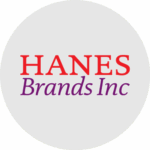
Hanes Calm, Warn, Act, Hanes Australasia
Calm, Warn, Act (CWA) is an online training program using video scenarios to equip retail team members with strategies to prevent and manage inappropriate behaviour. Scenarios cover verbal aggression, physical intimidation, sexual harassment and indecent calls, with content tailored to each brand’s specific risk profile.
Role play videos provide an immersive learning experience, allowing trainees to practise de-escalation techniques such as assertive language in real time. By combining realistic scenarios with interactive practice, CWA delivers practical skills that help employees respond confidently to challenging situations, supporting safer workplaces and enhancing customer and employee wellbeing across diverse retail environments.

Personal Safety Leadership Portfolio Initiative, J F Hull Holdings
In 2023 JF Hull introduced Actrua’s Switch On for Safety program to strengthen leadership capability across safety-critical roles. While 51 staff completed the training, early results showed no improvement in performance, with TRIFR remaining high. Recognising that training alone was insufficient, JF Hull launched its ninth policy initiative: Improving Our Safety Performance Through Leadership.
Central to this initiative was the introduction of monthly Personal Safety Leadership Plans (PSLPs), requiring leaders to demonstrate how they applied Switch On principles in daily work. Senior management reviewed each PSLP, providing targeted feedback to embed accountability and mentoring. Between May and November submissions more than doubled, coinciding with a 68% reduction in TRIFR and a measurable cultural shift in safety leadership.

Rio Tinto Emergency Services Comprehensive Training (ESCT) program, Rio Tinto
Rio Tinto launched the Emergency Services Comprehensive Training (ESCT) program in 2020 to address the industry-wide decline in emergency services volunteers and professionals. The program strengthens site-based Emergency Response Teams by tackling three key challenges: recruitment, retention and operational capability.
Delivered through a blended model of classroom training, FLAIM virtual reality simulations, online resources and monthly continuation training, ESCT provides clear pathways with nationally recognised qualifications in emergency response and healthcare. Covering fire, rescue, medical, HAZMAT, mental health and business resilience, the program is supported by partnerships with ERGT, St John and community organisations. Since launch, it has halved turnover, improved responder capability and enhanced safety outcomes across operations and communities.
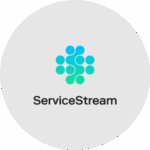
Spit Bridge Virtual Reality (VR) Training Program, Service Stream
The Spit Bridge Virtual Reality (VR) Training Program is an immersive, scenario-based WHS initiative designed for bridge operators. Built in Unreal Engine and deployed through Meta Quest 3 headsets, it replicates both routine and emergency operations in a safe, controlled environment.
The program strengthens procedural accuracy, hazard recognition and decision-making while preserving critical institutional knowledge. By replacing informal and inconsistent training with a standardised, engaging and effective solution, it ensures operators are better prepared for the demands of their role. This innovative approach demonstrates how technology can transform WHS training and deliver safer outcomes in complex, high-risk environments.
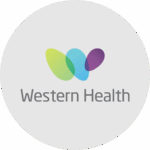
Reframe Your Response: The power of virtual reality training to support a safe workplace at Western Health
Reframe Your Response is a one-day virtual reality (VR) education program developed and delivered face-to-face at Western Health. Designed to address the challenges of occupational violence and aggression in healthcare, the program provides staff with an immersive and realistic training experience.
Through VR simulations, participants practise communication, de-escalation and confidence-building techniques in a safe, controlled environment. The program equips workers with practical skills to prevent and manage aggressive situations, improving both staff safety and patient outcomes. As an innovative approach to education, Reframe Your Response demonstrates how technology can transform workforce capability and embed safer practices in high-pressure healthcare environments.
Award 7: Best WHS Technology Innovation Finalists
Less than 1,000 employees

Kalamia Sugar Mill Boiler Stack Demolition, DEMEX
DEMEX developed a bespoke demolition system using the Brokk 200 robotic unit deployed via a crane-suspended, in-house engineered platform. This innovation enabled remote demolition at heights of up to 74 metres, eliminating the need for workers to operate at height or use conventional equipment. The platform design also reduced structural load on the stacks and improved stability in windy conditions.
A scaffold catch deck protected nearby infrastructure, ensuring works were completed safely, ahead of schedule and with zero impact to surrounding operations. By combining compact robotics with custom engineering, DEMEX significantly reduced risk, improved efficiency and delivered a safer solution for complex demolition challenges in hazardous and high-risk environments.

Overwatch, Hermes and Soteria
The catastrophic failure of the Brumadinho tailings dam in Brazil in 2019, which killed 270 people and caused widespread environmental damage, highlighted the urgent need for better monitoring of Tailings Storage Facilities. In response, geoscientist Aaron Tomkins developed Overwatch, a real-time subsurface monitoring solution designed to prevent catastrophic failures by providing visibility of critical factors such as liquefaction potential and safety margins.
Overwatch integrates geoscience insights with advanced hardware, data collection and an intuitive dashboard to give owners and operators continuous visibility of subsurface conditions. By consolidating information identified in post-failure investigations, the system enables proactive risk management and significantly improves safety and environmental outcomes across the mining industry.

Heron Construction Port Kembla Underwater Innovation Buggy, Heron Construction
Heron Construction delivered a complex marine infrastructure upgrade at Port Kembla NSW, converting Berth 101 from a coal to a gas terminal. A key challenge was installing geotextile fabric on a sand bund to stabilise and protect it from erosion. Traditionally this task would require around 500 dives in low-visibility water to manually position fabric and secure it before rock placement, creating significant risks from manual handling, fatigue, vessel machinery and falling rock.
Through a detailed risk review, Heron determined these conditions were unacceptable and developed the Geo Buggy—an innovative diverless solution. The custom-designed system eliminated hazardous diving activity, reduced manual handling risk and improved safety, efficiency and control in underwater construction environments.

Project Safe-Guard, QIC Real Estate
Following a traumatic suicide incident at Robina Town Centre in 2021, QIC Real Estate developed Project Safe-Guard, a first-of-its-kind initiative for Australian shopping centres. The program integrates WHS, psychosocial and security perspectives with AI-powered camera analytics to detect high-risk behaviours in real time and enable early intervention.
The initiative prevents suicide and self-harm by providing control room operators and security teams with live alerts, allowing rapid, compassionate responses. It also strengthens WHS maturity through dynamic surveillance and structured audit tools, including a Self-Harm Audit Tool reviewed by Lifeline Australia. Supported by standardised infrastructure, procedures and staff training, Project Safe-Guard demonstrates a proactive approach to reducing risk, protecting wellbeing and setting new benchmarks in safety innovation.
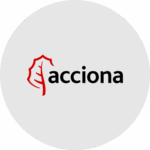
SWMS AI Development and review tool, Acciona
Safe Work Method Statements (SWMS) are critical for managing high-risk construction activities, yet traditional processes are often manual, inconsistent and time-consuming across projects and subcontractors. To address this, ACCIONA developed an AI-powered SWMS solution with two core components.
The first enables automatic generation of project-specific SWMS through a form-based interface. By entering project details and site conditions, users receive a clear, standardised SWMS aligned with internal procedures and regulations, improving quality and engagement while reducing manual effort. The second reviews subcontractor SWMS against internal checklists, identifying gaps and non-compliance for faster, more consistent assessments. Co-designed with safety teams and operational staff, the system is already delivering time savings, improved compliance and scalability across projects.

Phosphine Dilution System (PDS), CBH Group
CBH has developed a Phosphine Delivery System (PDS), a mobile, variable flow gas dilution system designed to safely fumigate grain and protect it from insect damage in storage. Phosphine is highly flammable at concentrations above 1.8%, requiring rapid dilution well below the lower explosion level before application.
The PDS incorporates multiple Layers of Protection identified through hazard analysis, including physical separation, certified components, integrated sensors and advanced control logic. Unlike earlier systems that relied heavily on operator checks, CBH’s customised design increases automation, reduces manual testing and improves user experience. The new fleet enhances efficiency and provides frontline staff with significantly improved safety outcomes when applying phosphine across grain storage facilities.
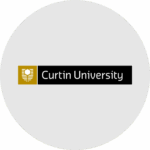
Pre-Acquisition Tool (The PAT), Curtin University
The WA WHS Act (2020) emphasises robust risk assessment to identify novel and elevated risks. Within the University setting, diverse cohorts of students, staff and researchers often face challenges in recognising hazards and meeting compliance requirements, particularly when working with hazardous materials or adapting to Australian regulations.
A review of incidents revealed that while risk assessments were completed, key hazards were frequently overlooked. The process relied on assumed knowledge and outdated paper-based checklists, making it difficult to manage multiple risk categories or keep pace with regulatory change. With hundreds of assessments completed annually, the system was onerous and inconsistent, prompting development of a contemporary, accessible and dynamic solution to improve compliance and prevent incidents.
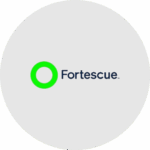
Fortescue's Collision Avoidance System, Fortescue
Fortescue has developed and deployed an in-house Level 9 Collision Avoidance System (CAS) across all operations to reduce light vehicle and heavy mobile equipment interactions. The system uses peer-to-peer asset communication and non-invasive brake actuation on HME to automatically activate the CAS, preventing potential collisions.
Following a comprehensive development and testing program, the system was first deployed at Christmas Creek in September 2023. Designed as a universal kit, it can be retrofitted to existing fleets and applied to new models identified through mine planning forecasts, providing scalable protection and significantly strengthening safety across Fortescue’s mining operations.

Kidston Pumped Storage Hydro Project - Intake Shaft Concrete Delivery, McConnell Dowell Constructors & John Holland Pty Ltd Joint Venture
The Kidston Pumped Storage Hydro Project, delivered for Genex Power in Far North Queensland by McConnell Dowell Constructors and John Holland JV, required the safe concrete lining of two 4m-diameter, 280m-deep intake shafts with no bottom access. Traditional methods such as concrete lines or craned kibbles presented unacceptable risks including high-pressure line failures, suspended loads and limited emergency response options. In collaboration with consulting engineers and with early engagement from WHSQ inspectors, the project team developed a bespoke person-riding kibble solution. This innovative system enabled safe, efficient delivery of concrete, eliminated high-risk activities and ensured critical infrastructure could be constructed without compromising worker safety.
Award 8: Best WHS Technology Deployment and Adoption Finalists
Less than 1,000 employees
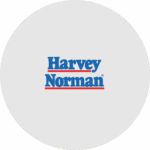
Harvey Norman Property Department, Harvey Norman Property
The Harvey Norman Property Team manages 100 sites directly and oversees 30 more through managing agents such as CBRE. Operating across a national portfolio created challenges with visibility of risks, particularly around contractor management, confined spaces, traffic and roof access. Early pilot assessments highlighted gaps in standards and prompted detailed discussions with Directors and the WHS team. The outcome was a clear action plan and a decision to implement a technology solution to improve compliance and safety oversight. By embracing a digital platform, the team has strengthened risk management, improved contractor accountability and delivered consistent safety outcomes across all sites.
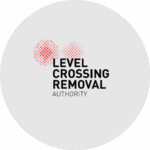
Reducing underground service strikes with Radio Frequency Identification (RFID) markers, Level Crossing Removal Project
The Level Crossing Removal Project (LXRP), one of Victoria’s largest infrastructure programs, presented a unique opportunity to rethink safety performance. Service strikes were identified as a significant risk given the scale of excavation and the dense concentration of underground services within the rail corridor. Strikes can result in serious injury, community disruption, repair costs, delays and increased insurance exposure.
Seeking a practical and scalable solution, LXRP trialled and adopted Radio Frequency Identification (RFID) markers. The technology provides a simple, cost-effective method of tagging underground services, integrating seamlessly into existing workflows and improving detection during excavation. This innovation has strengthened service strike prevention and demonstrated new approaches that can influence safety practices across the wider infrastructure industry.
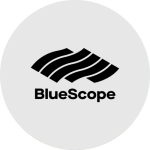
BlueScope Mobile Equipment Pedestrian Detection Technology, BlueScope Australian Steel Products
BlueScope Australian Steel Products is enhancing workplace safety by introducing Pedestrian Detection (PED) technology across more than 400 forklifts and mobile equipment at over 70 sites. The initiative aims to reduce incidents and near misses between pedestrians and forklifts, addressing risks that remain despite two decades of safety improvements since a workplace fatality in Queensland.
The system uses Visual AI (EPAS) to detect pedestrians, triggering alarms, neutralising the forklift and applying Autonomous Emergency Braking until the area is clear. In areas with limited line of sight, Hit Not technology is being deployed. These solutions strengthen existing controls, improve public safety at customer-facing sites and reduce the risk of dangerous interactions between forklifts and pedestrians.

Transforming Permit to Work into a Real-Time Safety Tool, Curtin University
Curtin University’s Bentley campus is a complex environment with high-risk activities including confined space entry, hot works, crane lifts and electrical isolations, requiring around 2,000 permits annually. These were previously managed through a legacy Permit to Work (PTW) system reliant on spreadsheets, email and outdated software, which created inefficiencies, delayed approvals and limited oversight of simultaneous operations.
The PF&D Compliance team led a redevelopment project to deliver a safer, smarter digital PTW platform aligned with Curtin’s Digital Roadmap and WHS governance framework. The system embeds safety controls into workflows, ensures only trained personnel manage permits and provides live, auditable visibility of permit status. This transformation strengthens compliance, improves operational effectiveness and creates a future-ready foundation for managing high-risk work.

Leading Safety Index, Fortescue
Fortescue’s Leading Safety Index (LSI) shifts the focus from counting injuries after they occur to confirming the presence of effective controls every day. Unlike the traditional TRIFR, LSI blends leading indicators, converts them to a normalised frequency rate and weights them based on ten years of data, producing a single daily score that provides foresight for supervisors.
The model balances promoters such as on-time actions against detractors like fatigue breaches, with regression ensuring only factors proven to predict injuries are included. A daily Power BI dashboard makes insights accessible to all employees, while governed data processes keep the index current. LSI enables proactive decision making and empowers crews to act before harm occurs.
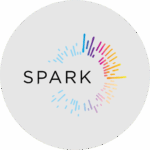
Spark North East Link - Scabbling Gantry, Spark NEL D&C
As part of Victoria’s largest road project, the North East Link tunnels involve 6.5 kilometres of underground works and over 20,000 linear metres of corbel scabbling. Traditionally completed manually with high-pressure water jets, scabbling exposed workers to risks such as fatigue, physical strain, flying debris and potential hose failures, while creating significant cleanup challenges.
To address these hazards, Spark designed and introduced an automated scabbling gantry before tunnelling began. The mobile steel system houses robotic scabbling booths with enclosed high-pressure jetting arms, operated externally for full worker separation. Wastewater and debris are captured within the unit, improving environmental outcomes. The innovation reduces risk, lowers PPE reliance, enhances consistency and delivers safer, more efficient tunnel construction.

